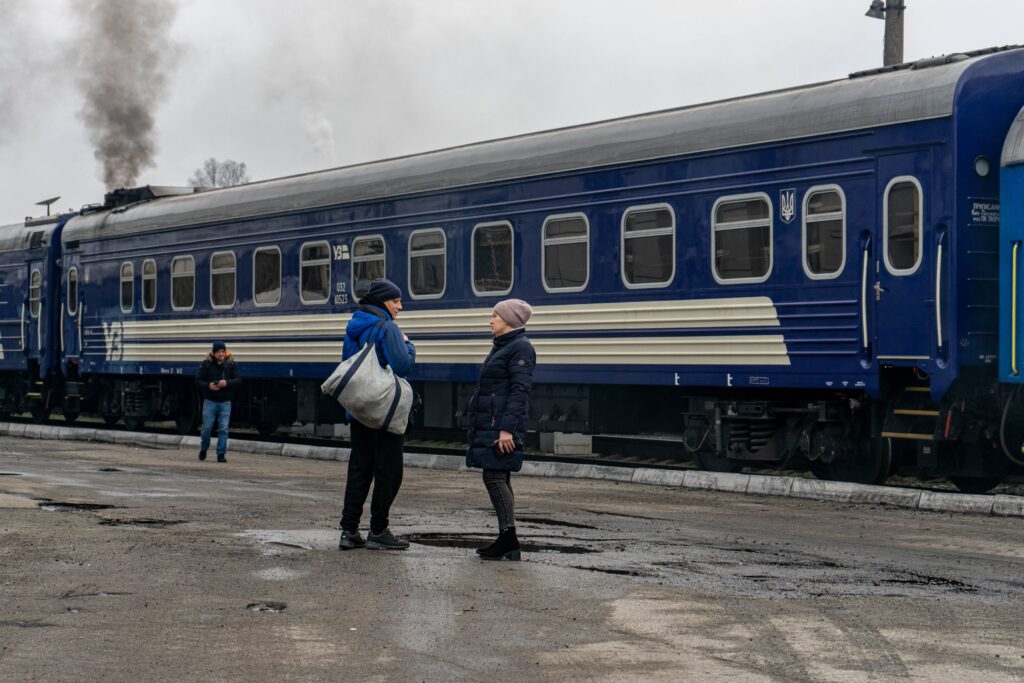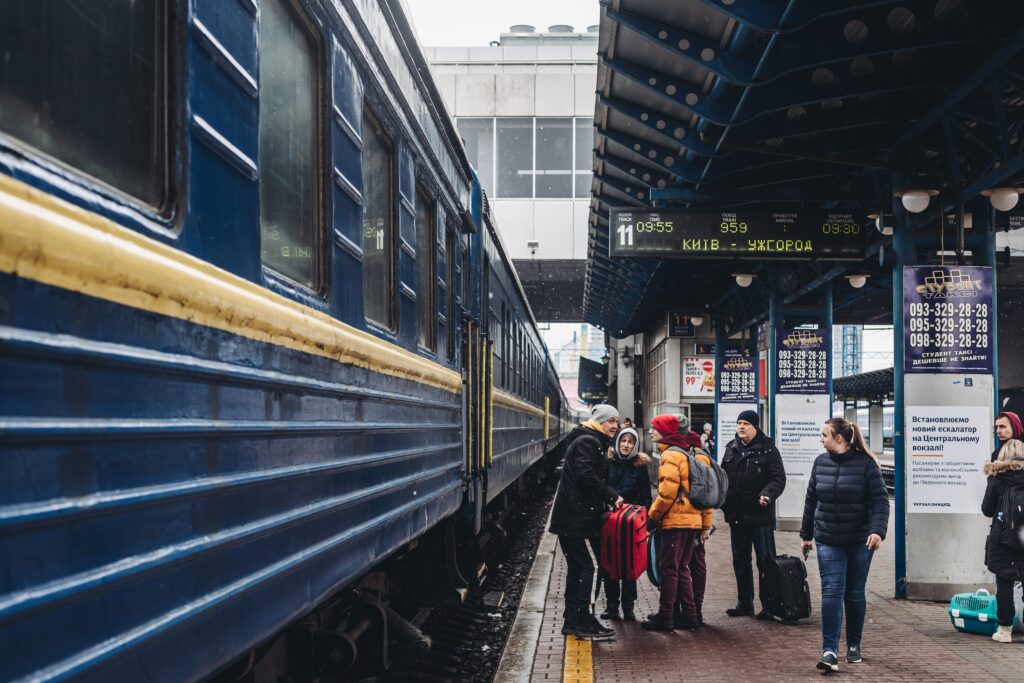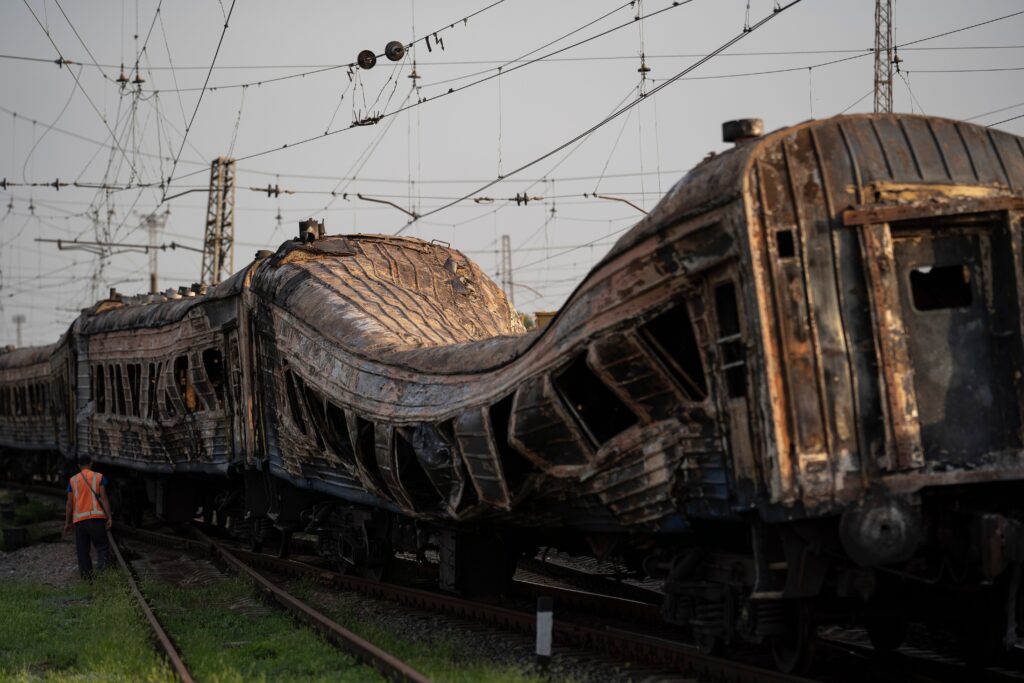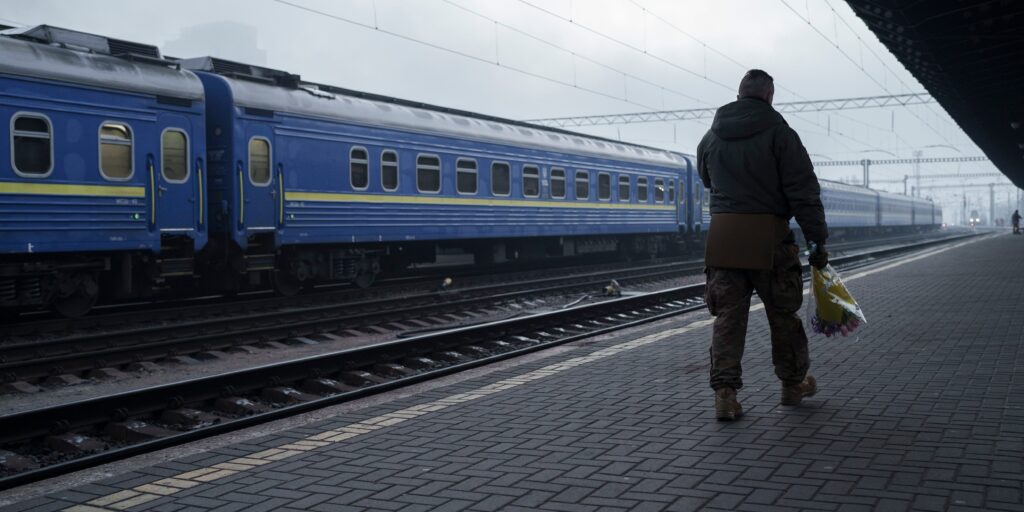- Ukraine's rail network has kept people, humanitarian aid, and cargo moving through a year of war.
- But the trains run under the constant threat of Russian attacks on the rail infrastructure.
- Alexander Kamyshin, CEO of Ukrainian Railways, explained to Insider how the operation keeps going.
Alexander Kamyshin will never forget the day he arrived in liberated Kherson, a war-torn city on the Dnieper River.
The CEO of Ukraine's national rail service was on the first train to arrive in the southern city just days after it was retaken by Kyiv's forces last fall, freeing it after months of Russian occupation.
Getting there was no easy task. Tracks and bridges damaged by fierce fighting had to be repaired, and deadly land mines threatening the safety of anyone coming through had to be disarmed before the train could pass. But when the train finally pulled in, it was greeted by the whole city — its arrival signaled freedom of movement, an influx of humanitarian aid, and the return of business with cargo flowing in and out.
"Some people say that railways is the lifeline of Ukraine," Kamyshin said in a recent interview with Insider. "That's why it's really important to bring back the connection to retaken cities."
Kamyshin oversees Ukrainian Railways, the state-owned company that has kept Ukraine's economy and people moving through a brutal year of war. Its network of tracks spans across the entire country and into neighboring eastern European countries, allowing Ukraine to operate a massive transportation system even as air traffic remains suspended.
Keeping the trains moving comes with significant danger for the company though as Russian forces attack the rail network around the clock, causing destruction to everything from the tracks to stations.
'They rely on the railway'
According to 2022 company data reviewed by Insider, Ukrainian Railways has helped evacuate millions of people from war-torn cities and transported thousands of civilians injured in Russia's assault. The company moved hundreds of thousands of tons of humanitarian aid through passenger trains and freight wagons and over 100 million tons of cargo — like grain, which was the country's biggest cargo export — from March to December of last year.

In the early weeks of the war, the main focus was on evacuating civilians and providing humanitarian aid. Later, it became critical to get back to exporting key goods so that Ukraine could begin generating revenue. The more goods it can export, the less dependent it is on external financial aid.
"It's extremely challenging during the war to keep the economy running," Kamyshin said. "And we are the main transport to bring grain and metals out of the country."
Ukrainian Railways facilitated the movement of over 17 million people across the country, mainly from eastern and southern regions — where fighting has been more intense — to the western regions that have seen less combat. Because Ukraine is such a large country and it takes a while to traverse by car, Kamyshin said people opt to take the train because it's affordable, comfortable, and safe.

Given the importance of the rail system to Ukraine, on-time performance is crucial for Kamyshin and his team, and even though the company is operating under war-time conditions, the results have been impressive. He said Ukrainian Railways averaged around an 85 percent on-time rate during 2022, though there were days when the figure jumped up to 95 percent or higher. Earlier in February, Kamyshin wrote on social media that he had a record day for on-time performance, with 98 percent of trains departing on time and 97 percent arriving on time.
On Sunday, Kamyshin apologized because the on-time arrival rate was "only" 90 percent, and that was because some trains had to be delayed as President Joe Biden made a surprise trip to Kyiv, where he met with Ukrainian President Volodymyr Zelenskyy.

"This passion to be on time is a really important value for us. During the war, people should rely at least on something," Kamyshin said. "They rely on the president, they rely on the army, and they rely on the railway. They know that no matter what happens, we don't cancel trains. During the whole war, we never canceled any single train. We always keep running."
'We decided we go up'
Traveling by rail does not come without its risks. Russian forces bombard the network with artillery shells on a daily basis, Kamyshin said, inflicting widespread damage to the tracks, stations, bridges, and wagons. As soon as the shelling stops, repair teams go out and fix whatever is damaged.
In one particularly deadly attack on the rail infrastructure, Russia troops fired rockets at a train station in the eastern Ukrainian city of Kramatorsk in early April 2022. Dozens of people, including children, trying to flee their homes were killed in the strike.

Roughly 10 percent of the infrastructure controlled by Ukrainian Railways is occupied by Russian forces, Kamyshin said. But whenever Ukraine's military liberates territory, he gets tasked by the government in Kyiv to re-connect the train network to cities as soon as possible.
Such was the case when Russian forces withdrew from around Kyiv last spring and when Ukraine launched a punishing counteroffensive in the northeast Kharkiv region at the end of the summer. The same happened in Kherson.
"The whole war changes with time, and the main skill we should keep in mind is flexibility," Kamyshin said. The company has been forced to adapt throughout the conflict and make tough calls. Early on, "it was about making decisions daily, and not making a decision was much worse than making a wrong decision."

But even with the burdens of war, Ukrainian Railways also managed to innovate and expand during 2022. The company has secured dozens of new passenger rail cars and renovated several more, according to the data reviewed by Insider. It added several new domestic and international routes — going to places like Poland and Moldova.
Existing lines connecting Ukraine with its neighboring countries were reconstructed and reopened, which is crucial for several reasons, Kamyshin explained. It keeps cargo moving so Ukraine can collect revenue from exports, and it helps transport Ukrainians to airports in other countries so they can leave the region. But it's also imperative for the country's national security: the more connections it has to Europe, the more secure Ukraine will be.
It's these connections that play a major role in keeping Ukraine's economy afloat and fueling its war effort, and they have been used by foreign leaders visiting the country in a show of support and solidarity.
"From day one, I felt that I don't want just to survive. We want to keep developing. We want to keep growing, to keep constructing, and to keep doing new projects even during the war," Kamyshin said.
"Otherwise, we are out — it's up or out," he added. "We decided we go up."
